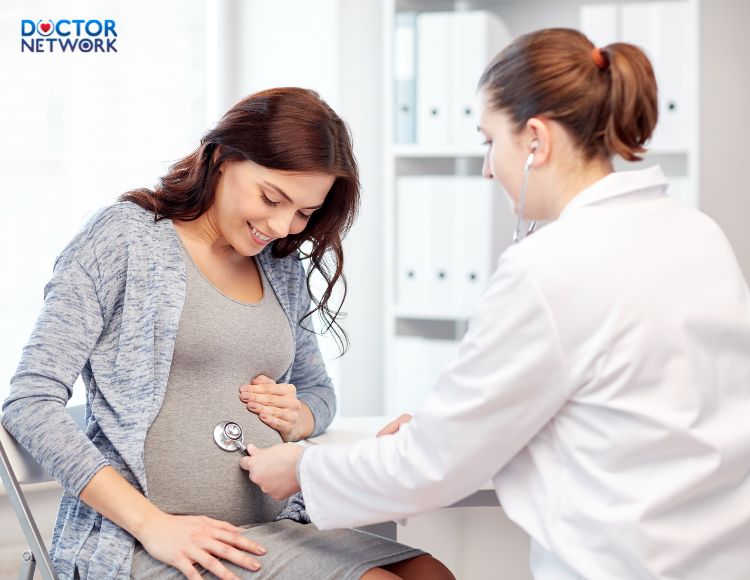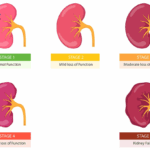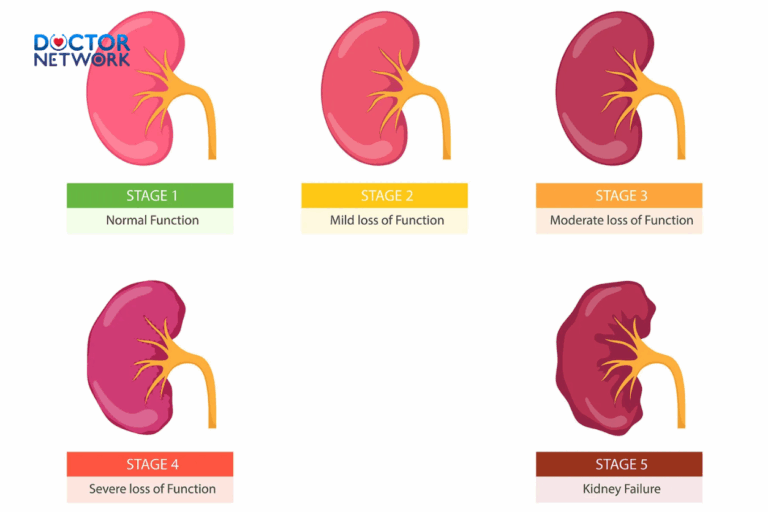Experiencing vaginal bleeding during pregnancy can be alarming, especially when it occurs without accompanying abdominal pain. This comprehensive guide delves into the potential causes of pregnancy bleeding but no abdominal pain, associated risks, and crucial steps to take for your health and your baby’s well-being. We’ll explore common benign causes, serious conditions to be aware of, and when to seek immediate medical attention. Additionally, we’ll provide expert insights on managing pregnancy bleeding, prevention strategies, and what to expect during medical evaluations.
Understanding Pregnancy Bleeding: A Comprehensive Overview
What is Pregnancy Bleeding?
Pregnancy bleeding, or antepartum hemorrhage, refers to any vaginal bleeding that occurs during gestation. This phenomenon affects approximately 20-30% of pregnancies, varying in intensity from light spotting to heavy flow. Bleeding can manifest at any stage of pregnancy, from early implantation to late-term complications.

Pregnancy bleeding, or antepartum hemorrhage, refers to any vaginal bleeding that occurs during gestation
Is Bleeding During Pregnancy Always Cause for Concern?
Not all instances of pregnancy bleeding indicate a serious problem. Many cases stem from benign causes and resolve without intervention. However, it’s crucial to understand that any bleeding during pregnancy warrants medical attention. Prompt evaluation can differentiate between harmless occurrences and potentially life-threatening conditions.
Common Causes of Pregnancy Bleeding without Abdominal Pain
- Implantation Bleeding
Implantation bleeding occurs when the fertilized egg attaches to the uterine lining, typically 10-14 days after conception. This type of bleeding is usually light, lasting only a day or two. - Cervical Changes
Hormonal fluctuations during pregnancy can cause the cervix to become more sensitive and prone to bleeding, especially after intercourse or a pelvic exam. - Vaginal Infections
Conditions such as bacterial vaginosis, yeast infections, or sexually transmitted infections can cause inflammation and bleeding. - Other Benign Causes
- Subchorionic hematoma
- Cervical polyps
- Hormonal fluctuations
- Irritation from vaginal examinations
Table 1: Characteristics of Common Benign Causes of Pregnancy Bleeding
| Cause | Timing | Duration | Flow | Color |
|---|---|---|---|---|
| Implantation Bleeding | 6-12 days post-conception | 1-2 days | Light spotting | Pink or brown |
| Cervical Changes | Any trimester | Variable | Light to moderate | Red or pink |
| Vaginal Infections | Any trimester | Until treated | Light | Variable |
| Subchorionic Hematoma | First trimester | Variable | Light to heavy | Red |
When Pregnancy Bleeding Could Be Serious
Potential Serious Conditions
- Miscarriage
Spontaneous loss of pregnancy before 20 weeks gestation. Symptoms may include cramping, tissue passage, and heavy bleeding. - Ectopic Pregnancy
A potentially life-threatening condition where the embryo implants outside the uterus, often in the fallopian tube. - Placental Abruption
Premature separation of the placenta from the uterine wall, which can deprive the fetus of oxygen and nutrients. - Placenta Previa
A condition where the placenta partially or completely covers the cervix, potentially causing severe bleeding during delivery. - Cervical Insufficiency
Weakness of the cervical tissue leading to premature dilation and potential pregnancy loss.
Weakness of the cervical tissue leading to premature dilation and potential pregnancy loss
Signs That Require Immediate Medical Attention
- Heavy bleeding (soaking through a pad in less than an hour)
- Bleeding accompanied by severe cramping or back pain
- Passage of tissue or clots
- Dizziness, fainting, or rapid heartbeat
- Fever or chills
List 1: Red Flags for Pregnancy Bleeding
- Severe abdominal pain
- Shoulder pain (may indicate internal bleeding)
- Persistent bleeding lasting more than a few days
- Bleeding in the second or third trimester
- Any bleeding if you have a history of pregnancy complications
Seeking Medical Evaluation: What to Expect
When you consult a healthcare provider about pregnancy bleeding, they will likely:
- Take a detailed medical history
- Perform a physical examination, including a pelvic exam
- Order blood tests to check hormone levels and blood count
- Conduct an ultrasound to assess fetal well-being and placental position
Table 2: Common Diagnostic Tests for Pregnancy Bleeding
| Test | Purpose | What It Detects |
|---|---|---|
| Complete Blood Count (CBC) | Assess blood loss and anemia | Hemoglobin and hematocrit levels |
| hCG Level | Monitor pregnancy progression | Hormone levels indicative of pregnancy health |
| Ultrasound | Visualize fetus and placenta | Fetal heartbeat, placental location, potential abnormalities |
| Pelvic Exam | Assess cervix and vaginal area | Cervical dilation, source of bleeding |
Managing Pregnancy Bleeding
Rest and Hydration
Adequate rest and hydration are paramount when managing pregnancy bleeding. Bed rest can help reduce the risk of further complications, while proper hydration supports overall maternal and fetal health. Avoid strenuous activities and follow your healthcare provider’s recommendations closely.
Medications
In some cases, medications may be prescribed to manage pregnancy bleeding:
- Progesterone supplements to support early pregnancy
- Antibiotics for treating infections
- Anti-D immunoglobulin for Rh-negative mothers
Always consult with your healthcare provider before taking any medication during pregnancy.
Tips for Preventing Pregnancy Bleeding
Maintain a Healthy Lifestyle
Adopting a balanced diet rich in essential nutrients, engaging in physician-approved exercise, and managing stress can significantly reduce the risk of pregnancy complications. A healthy lifestyle supports optimal placental function and fetal development.
List 2: Key Components of a Healthy Pregnancy Lifestyle
- Balanced nutrition with adequate folic acid, iron, and calcium
- Regular, low-impact exercise (e.g., swimming, prenatal yoga)
- Stress-reduction techniques (meditation, deep breathing exercises)
- Adequate sleep and rest
- Avoiding harmful substances (alcohol, tobacco, illicit drugs)
Prenatal Care
Regular prenatal check-ups are crucial for monitoring pregnancy progression and detecting potential issues early. Adhere to your healthcare provider’s recommended schedule of visits and screenings.
Regular prenatal check-ups are crucial for monitoring pregnancy progression and detecting potential issues early
Avoid Infections
Practice good hygiene and safe sex practices to prevent vaginal infections. Promptly treat any infections that do occur to minimize the risk of complications.
FAQs about “pregnancy bleeding but no abdominal pain”
Is pregnancy bleeding always dangerous?
No, not all pregnancy bleeding is dangerous. However, any bleeding should be evaluated by a healthcare provider to rule out serious conditions.
What should I do if I experience pregnancy bleeding?
Contact your healthcare provider immediately. While waiting for medical attention, rest, stay hydrated, and avoid sexual activity.
How can I prevent pregnancy bleeding?
While not all causes of pregnancy bleeding are preventable, maintaining a healthy lifestyle, attending regular prenatal check-ups, and avoiding infections can reduce the risk.
When should I go to the emergency room for pregnancy bleeding?
Seek immediate emergency care if you experience heavy bleeding, severe pain, dizziness, or fever along with bleeding.
Does pregnancy bleeding always mean miscarriage?
No, pregnancy bleeding can have various causes, and many pregnancies with bleeding continue to full term. However, bleeding can be a sign of miscarriage, which is why medical evaluation is crucial.
Scientific researches on “pregnancy bleeding but no abdominal pain”
- Vaginal Bleeding in Early Pregnancy and Pregnancy Outcomes in Women With and Without Pain
- Journal: Obstetrics & Gynecology (2022)
- This study examined the prevalence of vaginal bleeding in early pregnancy in women with and without abdominal pain and analyzed pregnancy outcomes.
2. Subchorionic Hematoma in Early Pregnancy: Clinical Outcomes
- Journal: American Journal of Obstetrics and Gynecology (2021)
- This study focused on subchorionic hematoma, a common cause of pregnancy bleeding but no abdominal pain, and its impact on pregnancy.
3. First-Trimester Bleeding Without Pain and Its Association with Miscarriage and Preterm Birth
- Journal: BJOG: An International Journal of Obstetrics & Gynaecology (2020)
- A study examining the association between painless bleeding in the first trimester and the risk of miscarriage and preterm birth.
4. Threatened Miscarriage: Predictive Value of Vaginal Bleeding Without Pain in Early Pregnancy
- Journal: The Lancet (2019)
- A study analyzing the incidence and predictors of miscarriage in the absence of abdominal pain in early pregnancy.
5. Clinical Management of Asymptomatic First Trimester Bleeding
- Journal: Journal of Maternal-Fetal & Neonatal Medicine (2018)
- A study providing clinical management strategies for asymptomatic first-trimester bleeding.
In conclusion, while pregnancy bleeding but no abdominal pain can be concerning, understanding its potential causes and knowing when to seek medical attention is crucial for maternal and fetal well-being. By staying informed, maintaining open communication with your healthcare provider, and following a healthy pregnancy regimen, you can navigate this challenge with confidence and care.
References:
Pregnancy bleeding but no abdominal pain: Be wary of miscarriagevinmec·1
What Does a Miscarriage Look Like? What to Expect with Bleeding and Symptomsavawomen·2
Kiểm Duyệt Nội Dung
More than 10 years of marketing communications experience in the medical and health field.
Successfully deployed marketing communication activities, content development and social networking channels for hospital partners, clinics, doctors and medical professionals across the country.
More than 6 years of experience in organizing and producing leading prestigious medical programs in Vietnam, in collaboration with Ho Chi Minh City Television (HTV). Typical programs include Nhật Ký Blouse Trắng, Bác Sĩ Nói Gì, Alo Bác Sĩ Nghe, Nhật Ký Hạnh Phúc, Vui Khỏe Cùng Con, Bác Sỹ Mẹ, v.v.
Comprehensive cooperation with hundreds of hospitals and clinics, thousands of doctors and medical experts to join hands in building a medical content and service platform on the Doctor Network application.



























